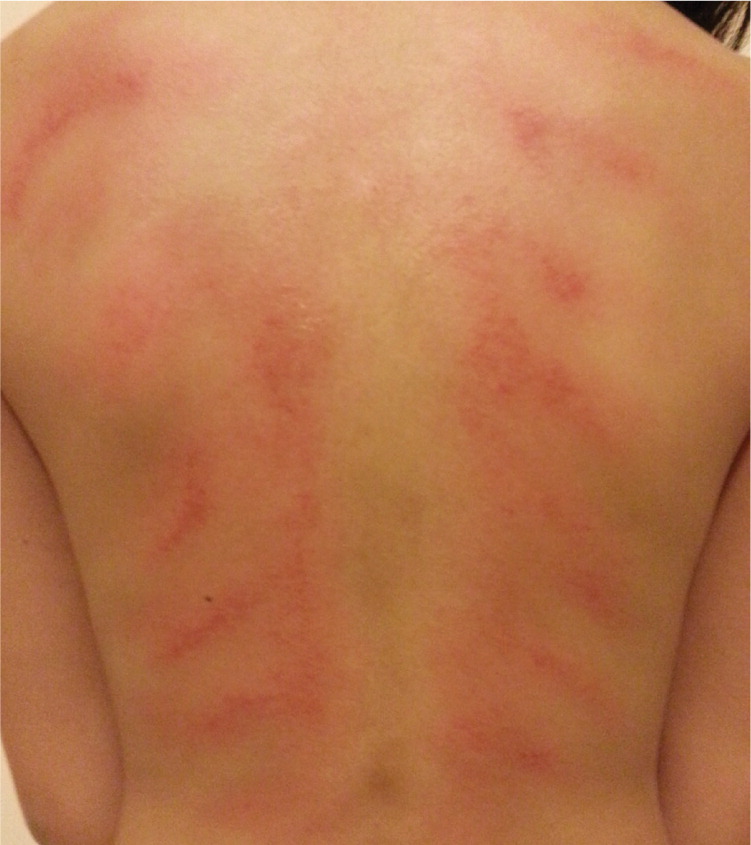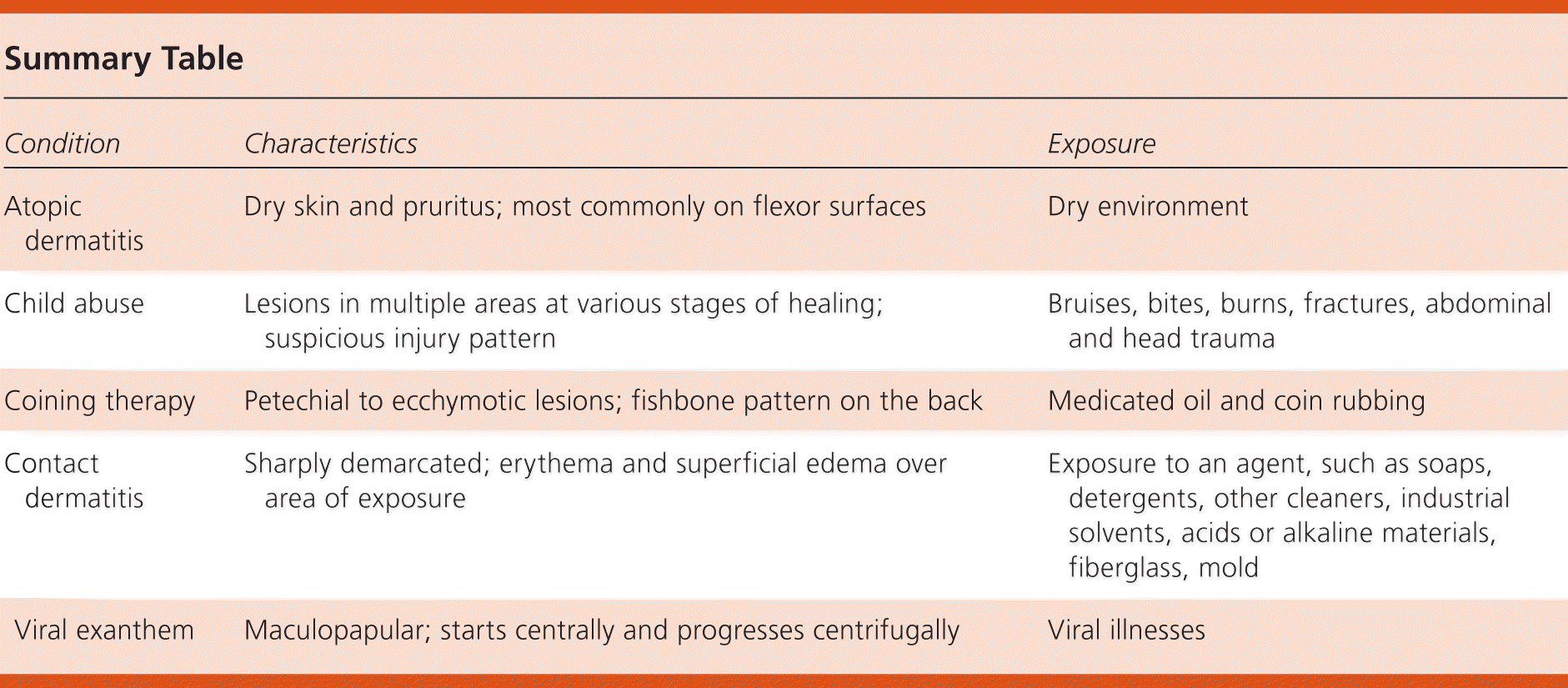
Am Fam Physician. 2016;93(2):131-132
Author disclosure: No relevant financial affiliations.
A nine-year-old Vietnamese girl presented with an erythematous rash on her back that appeared suddenly one day prior. She also had upper respiratory tract symptoms, including nasal congestion, sore throat, nonproductive cough, and a fever of 102°F (38.9°C) for three days. Her history was otherwise unremarkable.
On physical examination, the patient appeared acutely ill. She had erythematous nasal turbinates and bilateral anterior cervical lymphadenopathy. The lungs were clear to auscultation. There were linear erythematous lesions located on her posterior thorax (Figure 1). The lesions included petechiae and were nontender to palpation. She had no other skin lesions.

Question
Discussion
The answer is C: coining therapy. Coining therapy, or cao gio, is a traditional practice used by many Vietnamese, Cambodian, and Laotian persons.1 Mentholated oils are applied to various parts of the body, including the back, and then a coin is rubbed on the skin in a fishbone pattern. This can result in ecchymosis, petechiae, and mild skin burns.2 Coining is used to treat symptoms such as cough, nausea and vomiting, and viral illnesses.3 The diagnosis is clinical, through identification of the characteristic pattern of petechial, ecchymotic streaking lesions along the spine and ribcage.4 A thorough history is important to rule out other diagnoses, such as child abuse.
Atopic dermatitis is characterized by dry skin and pruritus. It is common in infancy, but the incidence is only 10% between six and 20 years of age. Its distribution is mostly on the flexor surfaces.2
Child abuse should be suspected if the history provided by the caregiver does not explain the child's injuries, the history changes over time, there is history of self-inflicted trauma that does not correlate with development, or there is an inappropriate delay in seeking care.5 The possibility of abuse should also be pursued if there are injuries to multiple areas of the body, injuries in various stages of healing, or suspicious injury patterns.5
Contact dermatitis can occur after exposure to many agents, including soaps, detergents, other cleaners, industrial solvents, acids and alkali materials, fiberglass, and mold. Subjective symptoms occur within seconds of exposure or can be delayed up to eight to 24 hours. Lesions are localized to the area of exposure and include erythema and edema. The lesions evolve from erythema to vesicles, erosion, and then crusting. More severe contact dermatitis may result in necrosis.2
Many viruses can cause rashes in children, but the distribution of this child's rash is not typical of an exanthem. Viral rashes are initially discrete and usually appear as pink papules and macules. They often start centrally and progress centrifugally, becoming confluent.2

| Condition | Characteristics | Exposure |
|---|---|---|
| Atopic dermatitis | Dry skin and pruritus; most commonly on flexor surfaces | Dry environment |
| Child abuse | Lesions in multiple areas at various stages of healing; suspicious injury pattern | Bruises, bites, burns, fractures, abdominal and head trauma |
| Coining therapy | Petechial to ecchymotic lesions; fishbone pattern on the back | Medicated oil and coin rubbing |
| Contact dermatitis | Sharply demarcated; erythema and superficial edema over area of exposure | Exposure to an agent, such as soaps, detergents, other cleaners, industrial solvents, acids or alkaline materials, fiberglass, mold |
| Viral exanthem | Maculopapular; starts centrally and progresses centrifugally | Viral illnesses |
